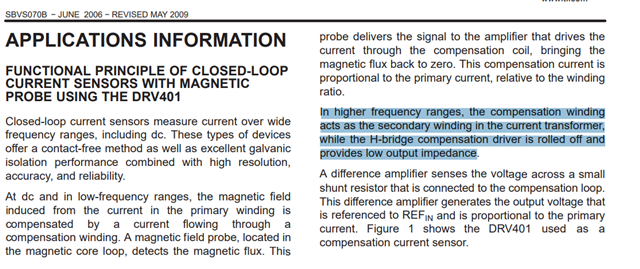Other Parts Discussed in Thread: DRV421
Tool/software:
Hi E2E experts,
I am currently in the early stage of project research and component selection, but I have encountered some issues and look forward to your response.
I couldn't find the information in the datasheet about the bandwidth of the current signal that the DRV401 can measure. I assume this should be related to the frequency of the probe excitation, right?
The datasheet indicates that the probe excitation frequency is recommended to be between 250kHz and 550kHz. Given this, what is the supported measurement bandwidth?
To broaden the measurement bandwidth, is it possible to increase the excitation frequency significantly beyond 550kHz? What impact would this have? Would the measurement accuracy decrease?
Additionally, what is the general accuracy achievable when using the DRV401 for current measurement?
Looking forward for your reply. Thank you very much!


